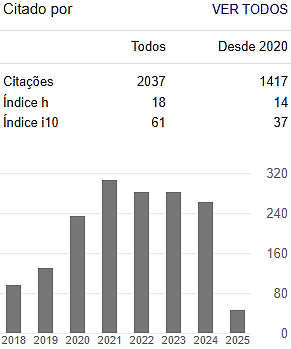Overcoming seed dormancy and jatoba seedlings development on alternative substrates
Keywords:
Hymenaea courbaril L.; scarification; emergence speedAbstract
The propagation of the jatoba (Hymenaea courbaril L.) by seeds is highly promising in the recovery of degraded areas. Thus, the present work had as objective to identify methods for overcoming seeds dormancy and alternative substrates for production of jatobazeiro seedlings. In a first experiment with four replications, seven seeds treatments were used: scarification with sandpaper (SS), SS and immersion in water for 24 h, SS and immersion in water for 48 h, intact seed, seed immersed in water for 48 h and seed immersed in water for 96 h. Emergency evaluations were performed every two days, in the period from 13 to 52 days after sowing. In a second experiment with three replicates, in randomized blocks, seven substrates were used: commercial substrate (CS); 40% SC + 60% forest humus (FH); 40% SC + 60% charcoal rice husk (CRH); 40% SC + 60% bovine manure (BM); 40% CRH + 60% BM; 40% CRH + 60% FH; e 40% FH + 60% BM. At 50, 70 and 120 days after sowing were evaluated the parameters: seedling height, leafs number, stem diameter, aerial part fresh matter, roots fresh matter, dry matter of aerial part, leafs and roots, and leaf area. At 120 DAS, the chlorophyll index was also evaluated. The scarification with sandpaper and immersion of seeds in water for 24 hours showed better seedlings emergence results. The mixture containing 40% FH and 60% BM gave more vigorous seedlings, especially at 120 days.
Downloads
Downloads
Published
Issue
Section
License
Copyright (c) 2020 Colloquium Agrariae. ISSN: 1809-8215

This work is licensed under a Creative Commons Attribution-NonCommercial-NoDerivatives 4.0 International License.

